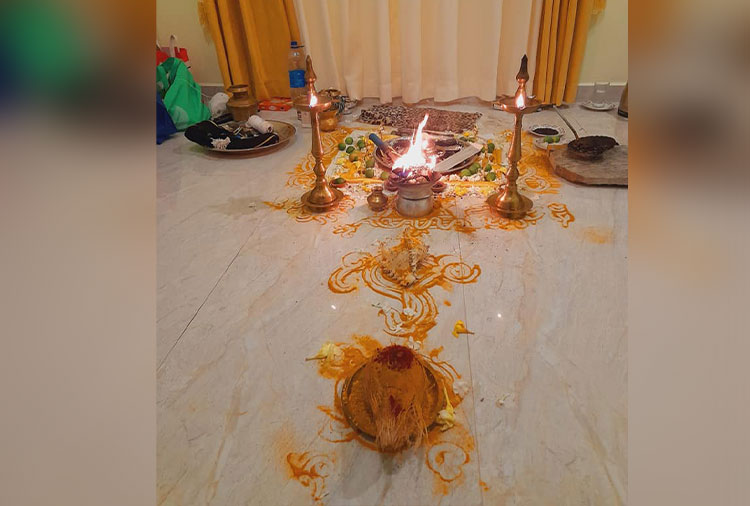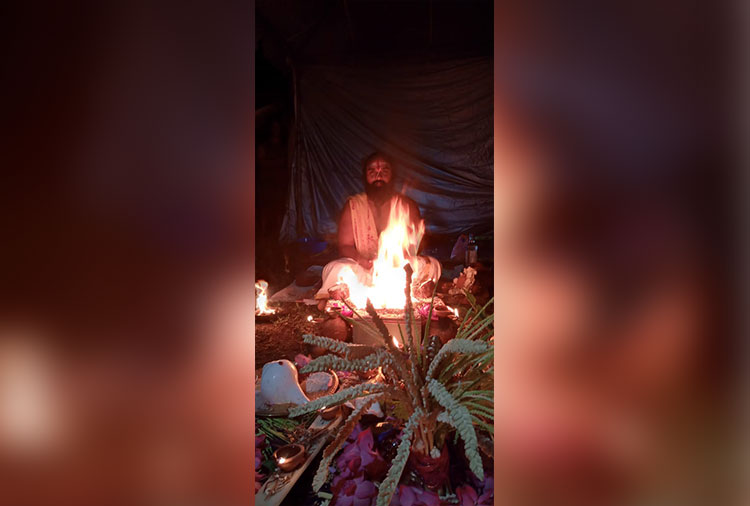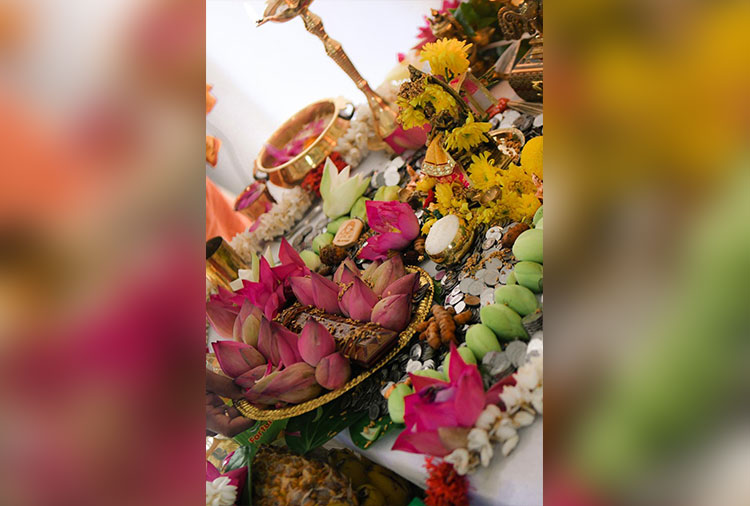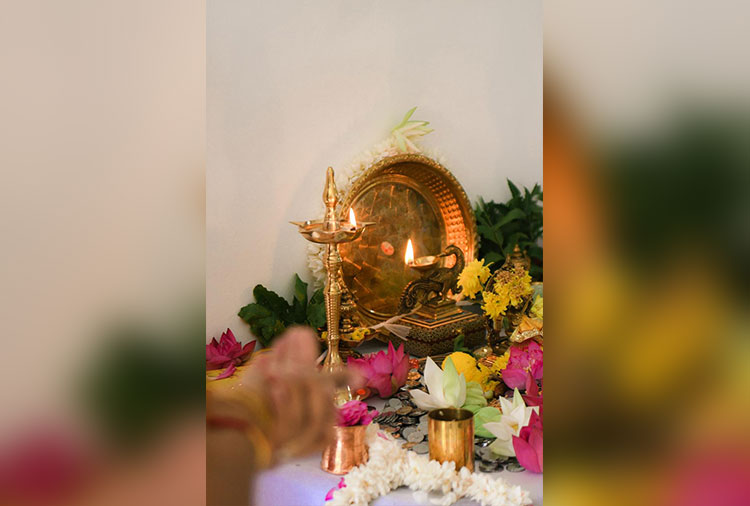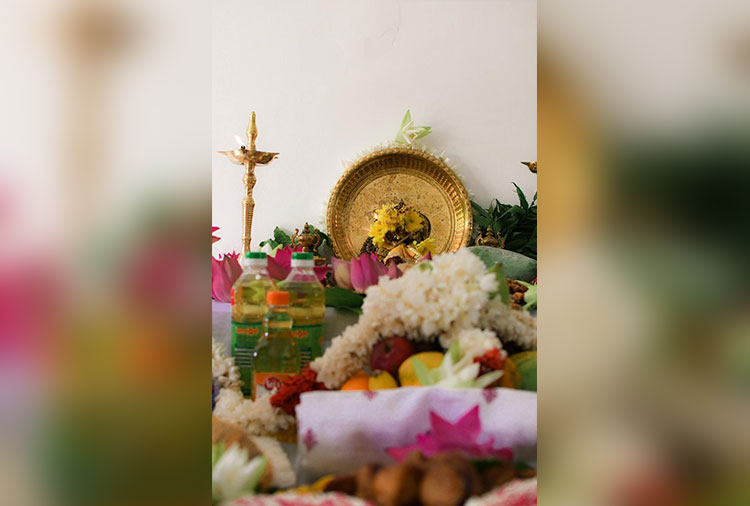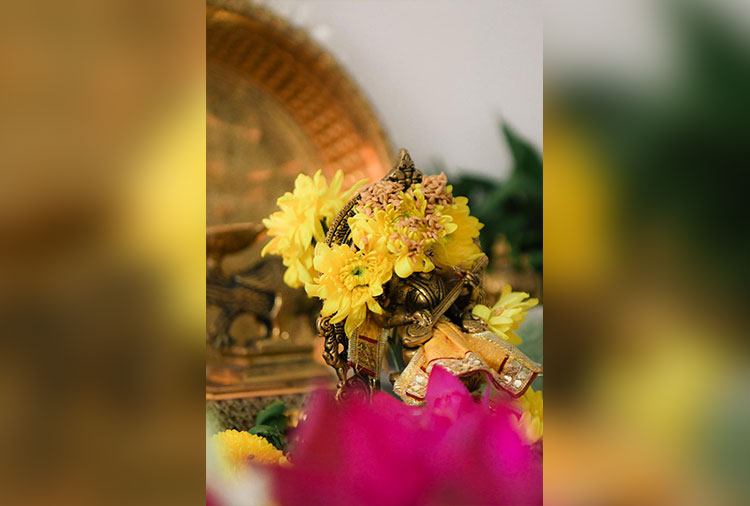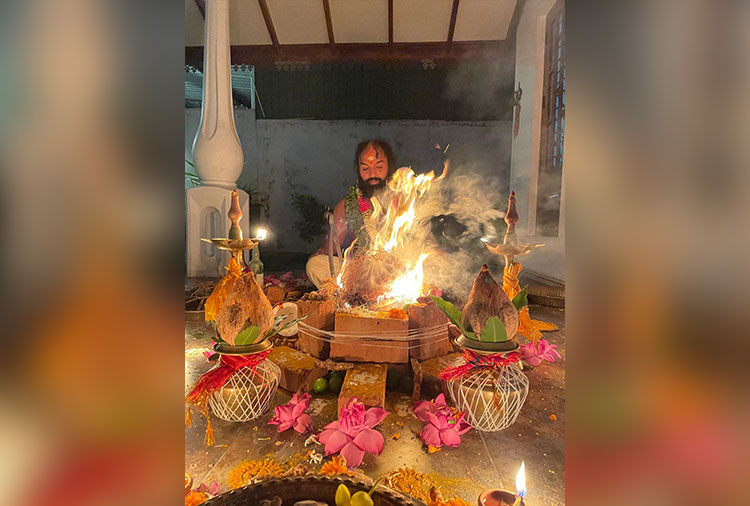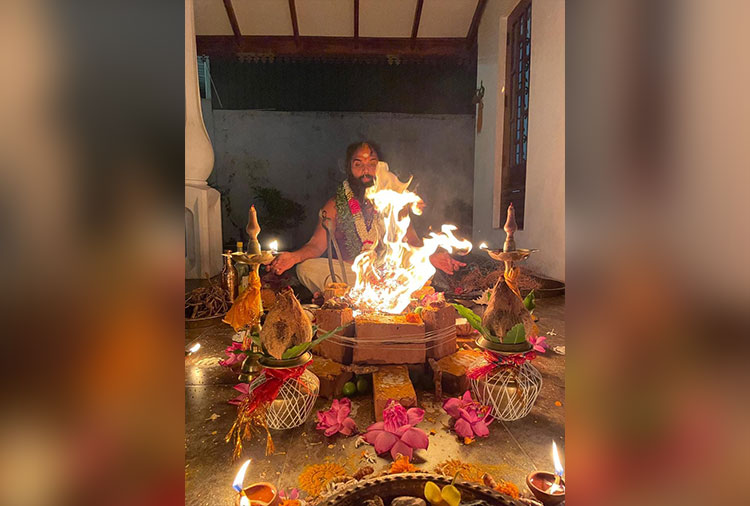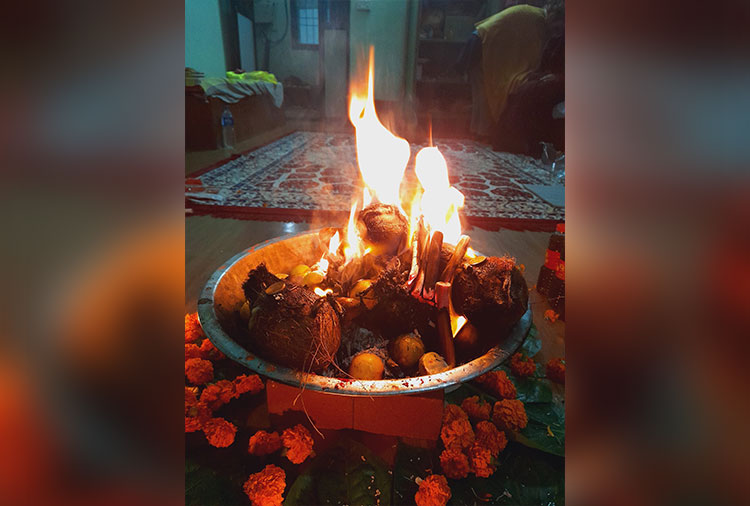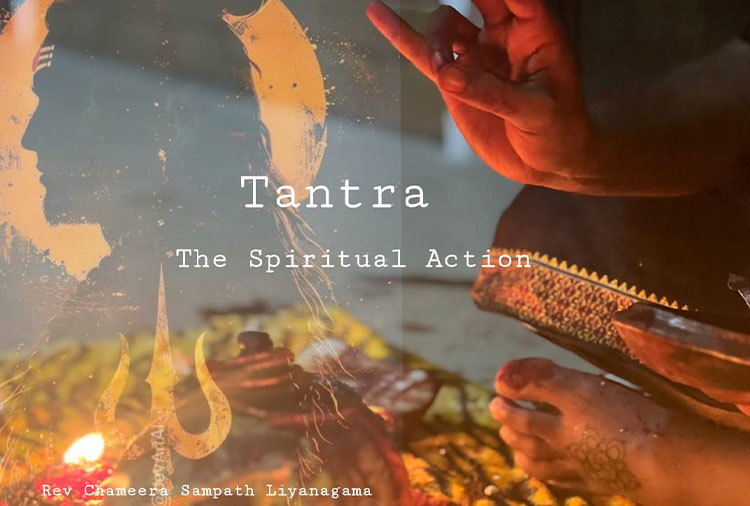TANTRA
Tantra is an esoteric yogic tradition that developed on the Indian subcontinent from the middle of the 1st millennium CE onwards in both Hinduism and Buddhism. The term tantra, in the Indian traditions, also means any systematic broadly applicable "text, theory, system, method, instrument, technique or practice".
Shiva Ashta Bhairav Puja
Shiva Ashta Bhairav Puja is a ceremony that worships the eight manifestations of the Hindu god Bhairava, a fierce form of Shiva. The ceremony is performed on Kalashtami, a festival dedicated to Lord Kaal Bhairav, the supreme ruler of time in the universe. The ceremony is believed to bring wealth, prosperity, and protection from evil forces.
Shiva Raj Bhawan puja
Shiva Raj Bhawan Puja refers to a worship ceremony performed in honour of Lord Shiva, who is regarded as one of the principal deities in Hinduism. This specific type of puja typically takes place in a temple or sacred space called the "Shiva Raj Bhawan," which might be a specific location dedicated to Lord Shiva or a symbolic reference to his divine residence.
The puja itself usually involves rituals such as offering flowers, fruits, and milk to a Shiva Lingam (a representation of Shiva), chanting mantras, and lighting incense. Devotees seek blessings for health, prosperity, and spiritual growth during this ceremony. The precise details of the puja may vary depending on the region and the customs followed by the temple or community performing it.
Shiva Shakthi Malayalam
"Shiva Shakthi" in Malayalam refers to the concept of the divine union between Shiva and Shakti, two central deities in Hindu philosophy. Shiva represents pure consciousness or the masculine principle, while Shakti symbolises energy, power, and the feminine principle. Together, they embody the harmonious balance of these two forces, essential for creation and existence.
In Malayalam culture, this concept is often explored through religious practices, temple rituals, and spiritual discourses. It can also be depicted in art, dance, and literature, reflecting the deep-rooted spiritual significance of the Shiva-Shakti union in Kerala's devotional traditions.
Soma puja
Date: 2023 December 15 Location: Lumbini, Nepal
Soma Puja is a Vedic ritual that involves the offering of "Soma," a sacred plant or its juice, to the gods, particularly Indra and other Vedic deities. Soma is considered a divine drink in ancient Hindu texts, especially the Rigveda, where it is praised as a source of vitality, immortality, and divine insight. The Soma plant itself has been lost to history, and its exact identity is still debated, but it was believed to have mystical and invigorating properties.
During Soma Puja, priests chant Vedic hymns and offer Soma juice, along with other traditional items like ghee, grains, and incense, into the sacrificial fire. The ritual is performed to invoke divine blessings, health, strength, and prosperity. It holds great significance in Vedic traditions and was central to many ancient Vedic sacrifices (Yajnas). Though not widely practiced today in its original form, the ritual is still referenced in spiritual contexts, and some modern practices try to symbolically recreate the offerings.
Sriman Narayana Nama
"Sriman Narayana Nama" refers to the chanting or recitation of the sacred name of Lord Narayana, who is a form of Lord Vishnu, one of the principal deities in Hinduism. "Sriman" is a title of respect and reverence, meaning "respected" or "honoured," and "Narayana" is another name for Vishnu, who is the protector and preserver of the universe.
Chanting "Sriman Narayana Nama" is a form of devotional practice (Nama Japa or Nama Smarana) where devotees repeat the name of the Lord with faith and devotion. It is believed that reciting the divine name can bring spiritual upliftment, peace of mind, and divine blessings. Lord Narayana is often associated with qualities like compassion, protection, and the maintenance of cosmic order, and invoking his name through prayer or chanting is seen as a way to seek his grace and guidance.
Sri Vidya Mantra
Sri Vidya Mantra is a sacred and powerful set of mantras within the tradition of Sri Vidya, a form of worship dedicated to the goddess Lalita Tripura Sundari, an aspect of the Divine Mother (Shakti). Sri Vidya means "sacred knowledge," and it refers to a system of Tantric worship that emphasises the unity of Shiva and Shakti, leading to spiritual enlightenment and the realisation of one's true divine nature.
The Sri Vidya Mantra is typically a combination of various bija (seed) mantras, culminating in the highly revered Panchadasi Mantra (a 15-syllable mantra) or Shodashi Mantra (a 16-syllable mantra). These mantras are considered to embody the essence of the goddess and are used in meditation and rituals to invoke her blessings for spiritual growth, prosperity, wisdom, and liberation (moksha).
The practice of Sri Vidya is esoteric, and the mantras are usually given by a qualified guru after proper initiation (diksha). Devotees often perform elaborate rituals such as the Sri Chakra Puja, where they worship the Sri Yantra, a geometric representation of the goddess's energy. This path is considered a deeply spiritual and transformative practice within the Tantric tradition.
The 10 Mahavidyas / Sri vidya puja
The 10 Mahavidyas, also known as the "Ten Great Wisdom Goddesses," are a group of powerful goddesses in the Tantric tradition of Hinduism, each representing a distinct aspect of divine feminine energy (Shakti). The Mahavidyas are considered to be different forms of Goddess Shakti, and they play a central role in the esoteric practices of Tantra, particularly in Sri Vidya worship. Each goddess has her own unique qualities, mantras, and iconography, and together, they represent the complete spectrum of feminine divinity—from benevolent and nurturing to fierce and transformative.
The 10 Mahavidyas are:
- Kali: The goddess of time, death, and destruction. She represents the transformative power of destruction that makes space for renewal.
- Tara: The goddess of compassion and protection. Tara guides devotees across the ocean of life and helps overcome fear and ignorance.
- Tripura Sundari (Shodashi): The goddess of beauty, love, and spiritual wisdom. She is the central deity in Sri Vidya worship and embodies the union of Shiva and Shakti.
- Bhuvaneshwari: The goddess who creates and sustains the universe. She is associated with space and the infinite expanse of creation.
- Bhairavi: The fierce goddess of discipline, strength, and protection. She represents the power of divine wrath and righteousness.
- Chinnamasta: The self-decapitating goddess who symbolises self-sacrifice and the transcendence of the ego.
- Dhumavati: The widow goddess who embodies the void and the aspects of life that involve pain, suffering, and loss. She teaches detachment and inner peace.
- Bagalamukhi: The goddess of power, speech, and control. She paralyses the enemies of her devotees and grants mastery over one’s words and actions.
- Matangi: The goddess of wisdom, art, and music. She is invoked for creativity, learning, and knowledge.
- Kamala: The goddess of wealth, prosperity, and fertility, similar to Lakshmi. She represents abundance in both the material and spiritual realms.
Sri Vidya Puja
Sri Vidya Puja is a highly revered and intricate form of worship that focuses on the goddess Lalita Tripura Sundari (one of the Mahavidyas), who is considered the most beautiful and benevolent form of Shakti. The Sri Vidya tradition revolves around the worship of the Sri Yantra (a geometric representation of the universe) and the chanting of the Sri Vidya Mantras. The most important mantra in this tradition is the Shodashi Mantra (16-syllable mantra).
Sri Vidya Puja combines elements of Tantra and Bhakti (devotion) and is aimed at attaining spiritual liberation (moksha), prosperity, wisdom, and inner transformation. During the puja, devotees offer flowers, food, and other offerings to the Sri Yantra while chanting mantras and following precise rituals under the guidance of a guru. This practice is believed to invoke the goddess's blessings, helping practitioners achieve success, fulfilment, and ultimate spiritual awakening.
Importance of Mahavidyas in Sri Vidya
In Sri Vidya, the 10 Mahavidyas are seen as different facets of Lalita Tripura Sundari, with each Mahavidya offering specific spiritual benefits. While Sri Vidya worship primarily focuses on Tripura Sundari, the inclusion of the Mahavidyas provides a comprehensive spiritual approach, addressing various aspects of life and consciousness—from worldly desires to ultimate spiritual freedom.








